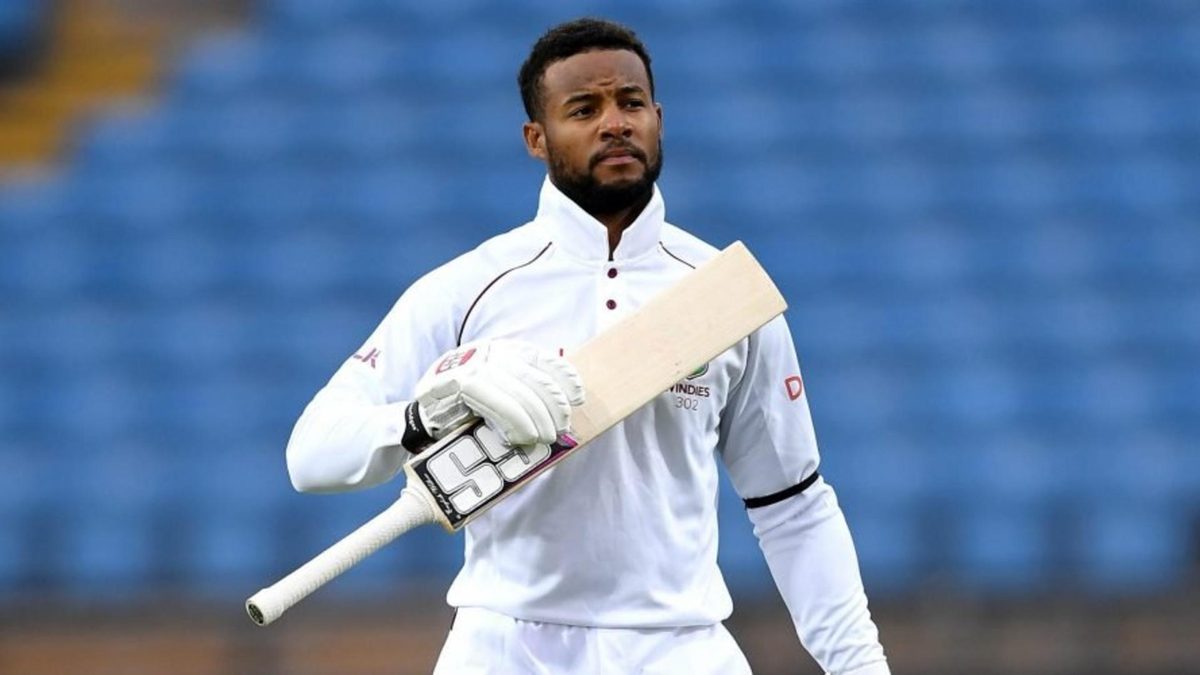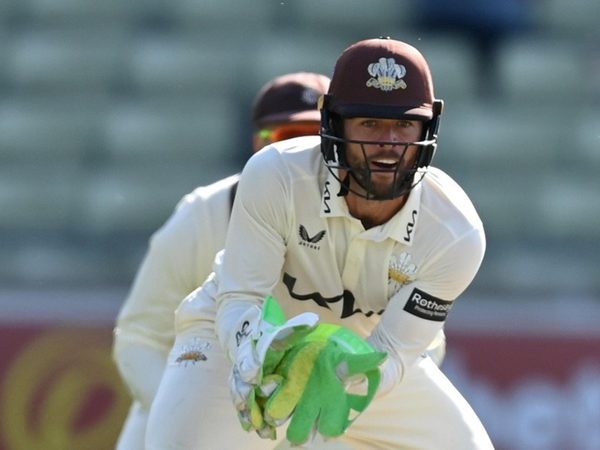
With twin tons in the 2017 Headingley Test, Shai Hope not only entered the record books, but also made a claim as one of modern game’s most promising batsmen. He was named a Wisden Cricketer of the Year the following spring.
First come the strains of calypso music – maybe “Island in the Sun” by Harry Belafonte – then the camera pans from a radiant sun in a blue sky to its reflection in gently lapping waves. The waves meet a sandy beach, where palm trees peer over some boys playing cricket. This is the Hollywood opening to a film set in the Caribbean, and the picture-postcard start to life enjoyed by Shai Hope, and his older brother Kyle, on their path to international cricket.
“We lived about five minutes’ walk from the beach,” says Shai. “After school we would go down there and play with a tennis ball or soft ball. That helped my flexibility and my movement from a young age.” Fast forward a decade and a half, and the brothers are still batting and chasing a ball around, this time on the green grass of Headingley. The sun is hidden behind cloud, and there are no gentle waves – just the dripping from the plastic glasses that form the beer snake along the White Rose Stand. But in late August last year, Shai Hope seemed in his element.
Headingley has been home to Herbert Sutcliffe, Len Hutton, Geoff Boycott, Michael Vaughan and Joe Root, yet by the end of the second Test between England and West Indies, Hope had become the first cricketer to score two hundreds in a first-class game there. This was the 534th, spread across 127 years. Either it was a statistical anomaly, or Hope – finally fulfilling the potential spotted by various selectors and coaches – was quite a player.
Shai Diego Hope, born in Saint Michael, Barbados, on November 10, 1993, made his bow in Test cricket against England in May 2015 at his home ground, the Kensington Oval – a game West Indies would unexpectedly win to square the three-match series. He had long been earmarked for international cricket, but many wondered whether, at the age of 21, he was ready. No matter: a double-hundred for Barbados against the Windward Islands at the same venue seven weeks earlier had caught the selectors’ attention, and soon he was facing James Anderson and Stuart Broad. It didn’t go well – Hope made five and nine – but he was picked for the subsequent home series against Australia, falling three times out of four to Mitchell Johnson, then for a tour of Sri Lanka.
The scores were yet to flow, but his Test career was up and running. Hope had been spotted in Barbados by former Sussex and England batsman Alan Wells, and included in the first draft of a programme run in conjunction with the Barbados Cricket Association. The scheme sent a student on a scholarship to Bede’s School near Hailsham on the edge of the Sussex Downs, where Wells was in charge of cricket. Hope captained the first team in 2011 aged 17, and 2012, following in the footsteps of Middlesex off-spinner Ollie Rayner and Sussex batsman Luke Wells, Alan’s son. And he was grateful for what he learned.
“I would say that was a life-changing experience. At Bede’s, I mixed with 16 different nationalities under one roof. Being able to adjust to certain people’s lifestyles, and how they do things, was a real experience off the field. On the field, the incredible facilities helped me develop my game and make the most of the ability I had.”
Hope appeared to be made of the right stuff. His dad Ian was a decent club cricketer who stopped playing to watch his boys, while mum Quinta played netball and cricket, enjoying bowling more than batting, to her sons’ amusement. The reports from England and in Barbados were of a dedicated individual. Those who know him well say he is not demonstrative, but focused on meeting challenges. His coach at the West Indies high performance centre, Graeme West, was struck by his commitment: “It was always a case of when Shai made it, rather than if.”
And yet that first foray into Test cricket suggested it did indeed come too soon: in his first 16 innings, he failed to pass 41. A breakthrough came in a win over Pakistan in May 2017, again at Bridgetown, where he made a patient second-innings 90 to scrape together a target of 188. The Pakistanis were skittled for 81.
Even so, on arrival in England shortly after, expectations were low, and lower still after West Indies lost the day/night Test at Edgbaston by an innings. At that point Hope, who made 15 and four as they lost 19 wickets in a day, was averaging 18 from 21 Test innings. With Kyle making 25 and 12, there were concerns that West Indies might soon be without a Hope. Leeds changed all that. First, Shai made 147, putting on 246 with Kraig Brathwaite to earn West Indies a lead of 169. Then, with his team chasing a distant 322, he took them to victory with an unbeaten 118, his alliance with Brathwaite this time worth 144. He conducted a series of post-match interviews with such unflustered dignity one wondered whether he quite realised what he had achieved.
A classy 62 at Lord’s, where England resumed normal service, confirmed he was now the wicket the opposition craved most and, when he began a two Test series in Bulawayo against Zimbabwe with scores of 90 not out and 44, his average reached a respectable 35. But the memories of Leeds lingered. “No one expected us to win at Headingley,” says Shai. “That was a huge motivation for us. Why shouldn’t we compete and win? We have pride in the badge and we are proud of where we come from. There’s an expectation now, and I’m happy with that.”








